Total War: Warhammer 2’s Lizardmen are a brutal blast to play, while the campaign offers a different kind of scale
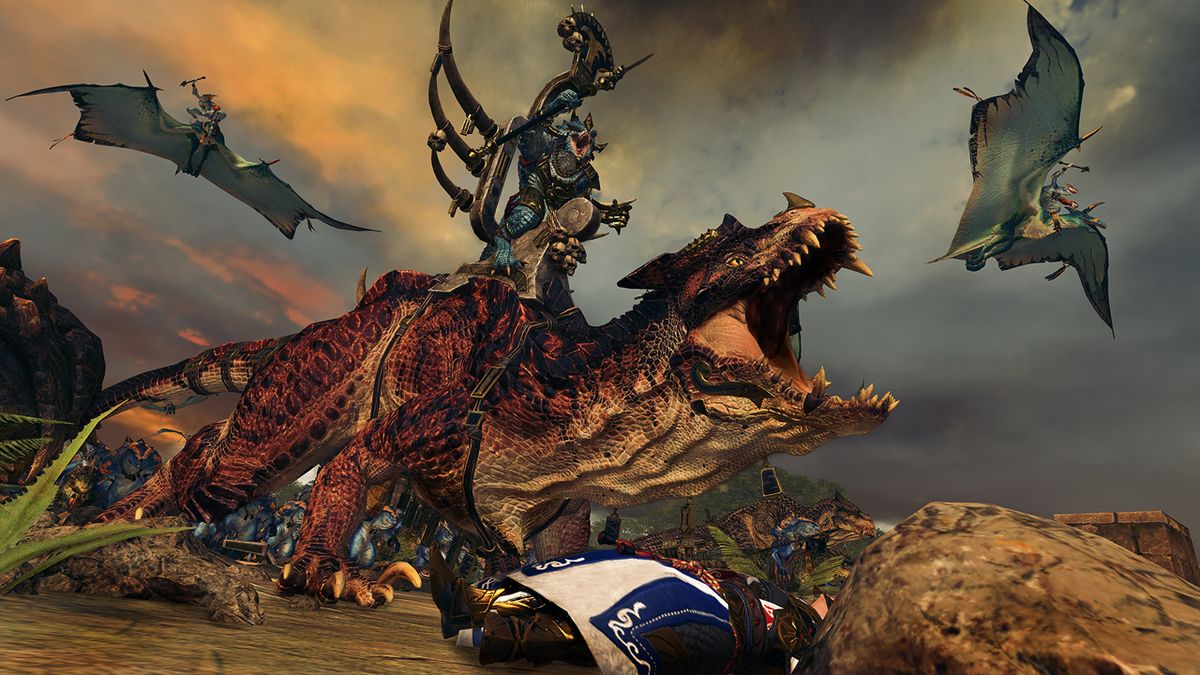
It’s ironic that some are complaining that Total War: Warhammer 2 is being released ‘too soon’ after its predecessor, particularly given the claims that such a schedule makes the game feel more like a DLC expansion. Because while ‘expansion’ is absolutely the operative word in terms of TW: WH2’s overarching ethos - and it will, in fact, operate with a kind of steroid-DLC functionality a little after launch - it’s really far too big an affair to pass off as an add-on.
With four new playable races (with two campaign variants each, but more on that later), a vast, all-new map, and a smartly different approach to campaign progression, it’s certainly a brand new beast. But it’s also a game that seems sympathetic to its recent precursor, with no desire to make it obsolete. Soon after launch, a patch will allow players of the original game to combine its world map and races with those of its successor, creating a huge, double-sized, ultimate edition of both games. So in a way, yes, Warhammer 2 is an expansion, just not in the way the more cynical might expect.
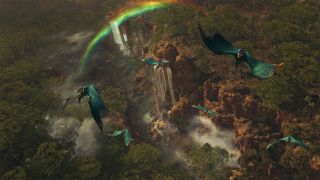
That said, Total War: Warhammer 2 also feels a tad more focused than its predecessor, in both the gouging, clanging, limb-flinging arena of battle, and the wider, overworld journey through its more narrative-focused story campaign. The latter sports a fresh, four-continent map, predominantly taking in Warhammer’s New World, which hosts the central quest to control the Great Vortex over Ulthuan. Interested, confirmed, and entirely playable parties this time around are the Lizardmen of tropical Lustria, the High Elves of Ulthuan itself, and the Dark Elves of the bleak, frozen, and generally not-worth-going-to Naggaroth. The Skaven Ratmen are strongly rumoured too. All races have their own reason to fight for the magic-sucking sky-pipe (generally based around harnessing its power, or destroying it in order to free the excess of Chaos magic it collects), except of course the Skaven, because they don’t actually exist.
What this breaks down to is a campaign structure that aims to eschew the RTS genre’s frequent problem of superpower apathy - whereby players eventually become so powerful and numerous of forces in campaign that they often just quit and start over before finishing - using the central goal of the Vortex as a means to create not a trudge through an attritional endgame, but rather a tense race to the finish line. The intent is that you’ll quickly hit a level of power that will see you unlikely to be wiped off the map, but that the various territory gains, exploration rewards, and empowering Vortex rituals committed by the rival factions will keep you on your leathery, taloned toes right to the end.
Speaking, as I obliquely am, of Lizardmen, I’ve now had a chance to play as the sequel’s cabal of cold-blooded combatants. Taking on the Fallen Gates quest battle (which sees my noble scale-faces going up against a bunch of interloping High Elves who are trying to break into an ancient magical device residing on our turf), I’m presented with a flat jungle clearing leading to a river cutting off the foot of a wide hill, the two areas connected by a tight, bridge-based choke-point. Choke-points are apparently going to be more of a thing in Total Warhammer 2, (look, I’m just calling it that now, okay?), and I am literally fighting an uphill battle.
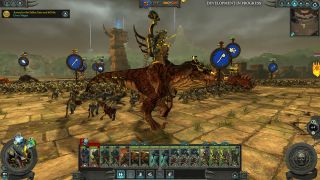
Fortunately, my angry fang-boys are well equipped. Leading them as Legendary Lord Kroq-Gar - each race now has two Lords, who start the campaign in different locations, for variant campaign play-throughs or asymmetric co-op - I immediately try to punch a hole in the Elven ground-troops on the bridge using Kroq-Gar, a stegadon, and a feral bastilodon. My three heaviest units, dropped on a wall of squishy Elf-flesh, basically. It might sound risky, sending my Lord in on the first wave, but his innate ability to regen himself and nearby units provides rather a nice safety net to the whole operation. Door kicked rudely open, I flush through my foot soldiers (Saurus Warriors and Skink Skirmishers in this case) to flood the bottom of the hill, sending my heavies on to new targets.
Here’s where things get a bit trickier, as my single, clear objective is replaced by several different priorities. There are new Elven squads to deal with, of course, but also bolt caster units and a big gang of archers. And the elevation advantage. Because of course the elevation advantage.
Sign up to the 12DOVE Newsletter
Weekly digests, tales from the communities you love, and more
My initial (bad) plan is to flank the projectile units with my heavies while distracting them with my hardy Temple Guard. It eventually works, but isn’t exactly quick or clean. In fact it gets rather messy. I try a different tack on a later play-through, recognising that perhaps that choke-point’s use isn’t over. Placing my ballista units (stegadons with magical Solar Engines equipped) at either side of the bridge’s mouth, facing inward, I hold back and drawn the the Elven warriors down toward me, putting a bastilodon on loose sheepdog duty. This boxed-in killzone works much better, clearing the centre of the field rather well, and otherwise keeping the opposition busy until my second deployment arrives.
That deployment? Two units of Terradon riders armed with Fireleech bolas. Suddenly the skies are mine, and that elevation advantage no longer seems too big a deal. Sending the riders on repeat, cross-map bombing raids, I concentrate on the archers at first, hitting them on the ground with the bastilodon at the same time. The Fireleeches aren’t exactly an instant solution, but they have a pleasantly effective, attritional effect, allowing me to push forward a lot more safely. Which is good news, as the Elves are about to launch their final gambit: Two roaming Mages on chariots. Fortunately, this gives me a gambit too. The Mages add a new win condition to the map. If I can take them down, it’s all over. Obviously they become my new priority.
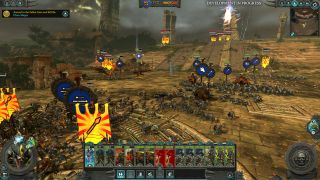
I’m not going to say that what happens next is pretty, because it really isn’t. I’m far too close to victory, and far too strong of numbers, for subtlety. And besides, a one-off game demo with no campaign repercussions tends to encourage bravado. I loosely repeat my earlier strategy of a Solar Engine pincer, and chase the chariots up and down the map to slow them with my heavies as they try to attack my ground troops. Terradons fly overhead, tracking the Mages and bombing zealously. There’s now also the small matter of an Elven dragon in the skies, but I uncharacteristically take little interest in dragons at this point, deeming it a lower priority with an objective-based win so near. The chariots are now getting nowhere fast, and moments later, they are dead. I imagine a single wheel, bouncing down the hill on fire. It makes me happy.
What makes me less happy is the victory screen, which tells me that despite achieving what felt like a fairly decisive win, fueled by a couple of natty bits of aggressive sleight of hand, I have suffered losses the game deems too great for comfort. Evidently I have not yet mastered the intricacies of Total Warhammer 2’s reptilian ravagers, but that’s fine. They’re already immediately fun to use, parseable enough at first glance to pick up and do solid, (relatively) thoughtful damage with. With some proper exposure and a full campaign progression to learn their more nuanced ins and outs, I reckon the Lizardmen will present a great time.
As in fact should Total Warhammer 2 in general. Not just replacing the original game, or simply adding to it, Creative Assembly’s ambition of a grand, multi-game mash-up, blending the original campaign with the sequel’s locations, objectives, rituals, lootable ship-wrecks, and roving, multi-race, rogue armies is a pretty damn exciting prospect indeed. And even without that crossover, the base game is already a heck of a meaty offering. And this is the second part of a promised trilogy. Total Warhammer 2 might well be operating like an expansion as well as a sequel, but the eventual scale and shape of that potential growth is undeniably tantalising.
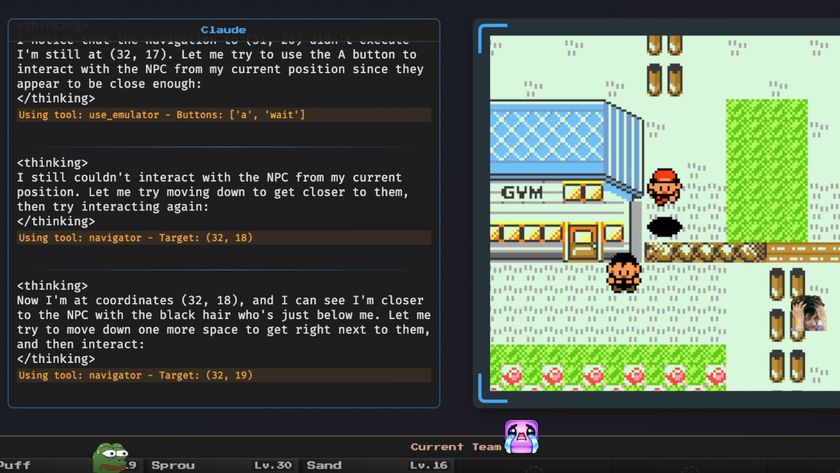
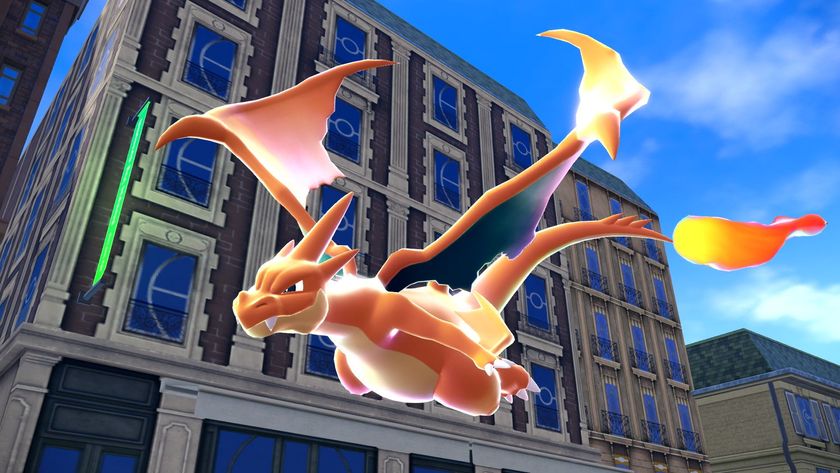
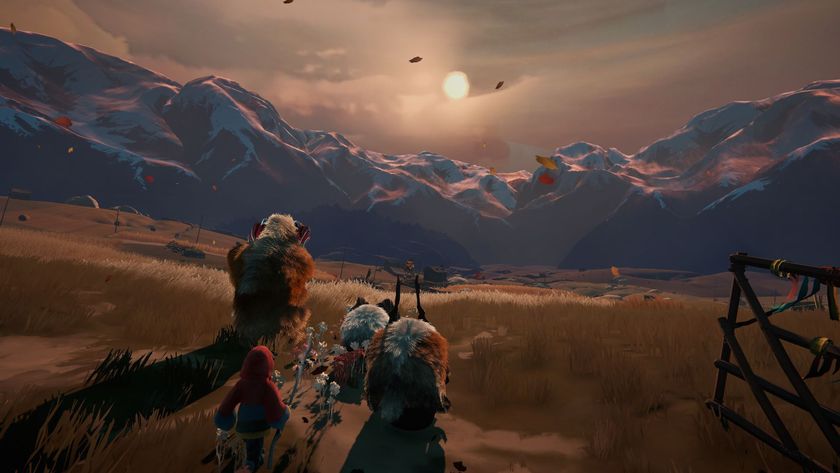
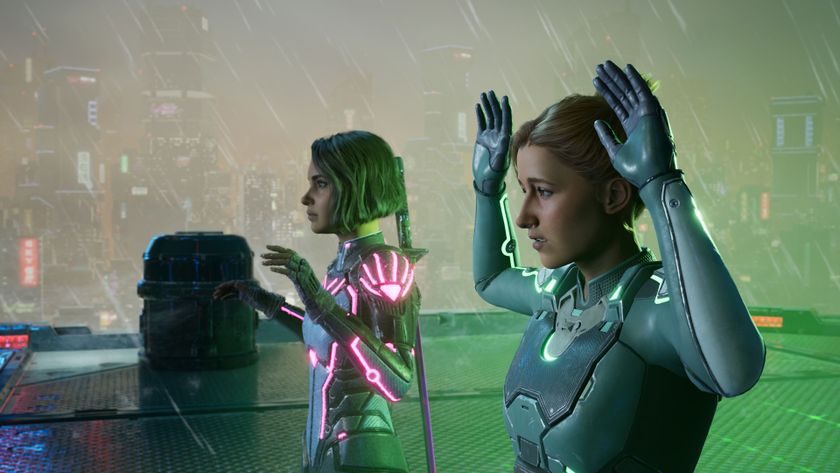
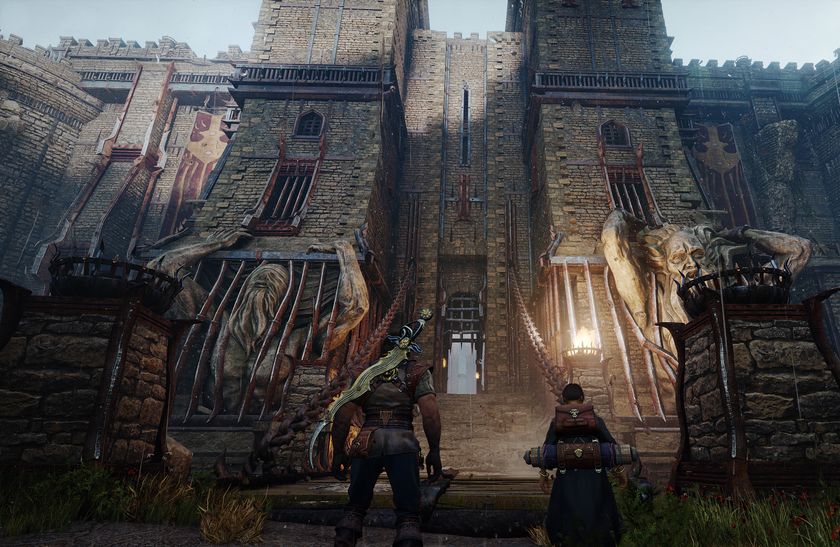
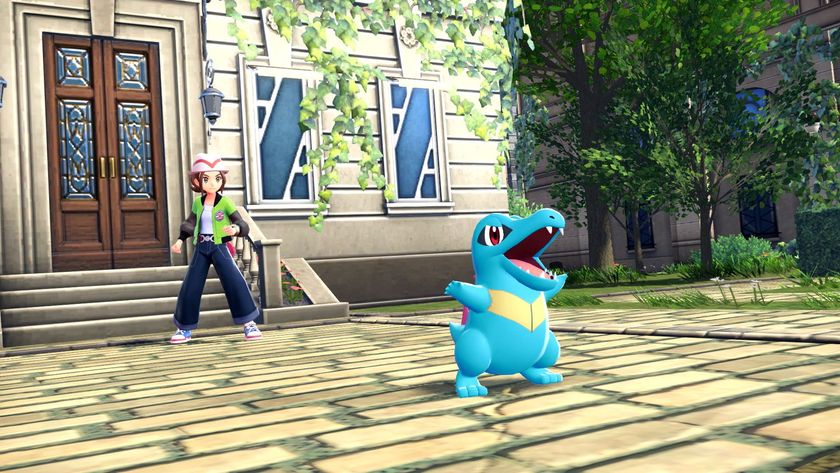
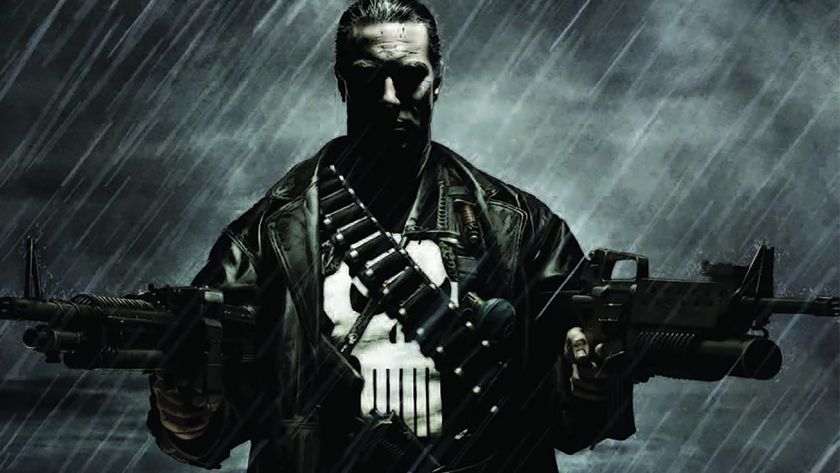


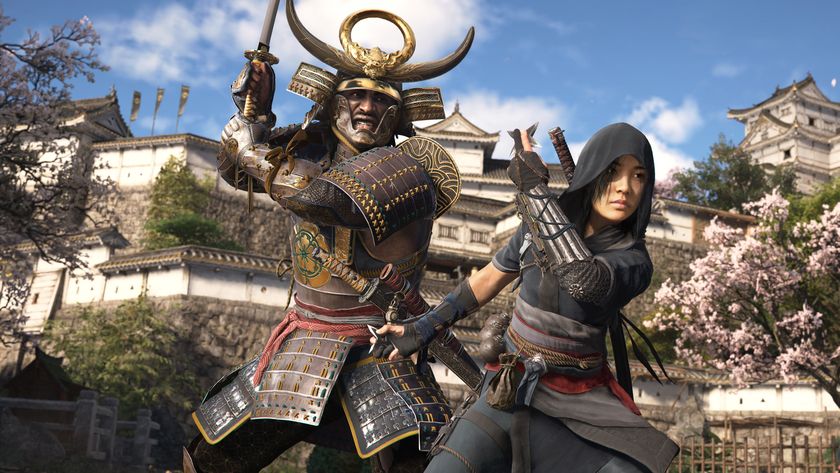
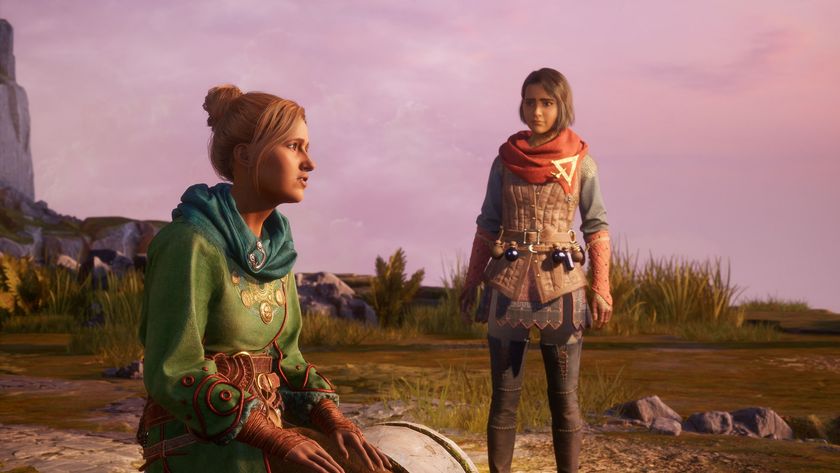


An AI's mission to 'teach' itself Pokemon Red is going as well as you think - after escaping Cerulean City after tens of hours, it went right on back

Pokemon Legends Z-A's visuals aren't "great" say former Nintendo marketing leads, but hope Switch 2 could allow Game Freak to "go back to the drawing board" and add more detail to future RPGs





